(TITC) - The north-eastern mountainous province of Ha Giang, home to 22 ethnic groups, also well-known as the place where “flowers grow in rocks”. This land is becoming an attractive destination that possesses not only the wild and magnificent beauty but also poetic and dreamy.
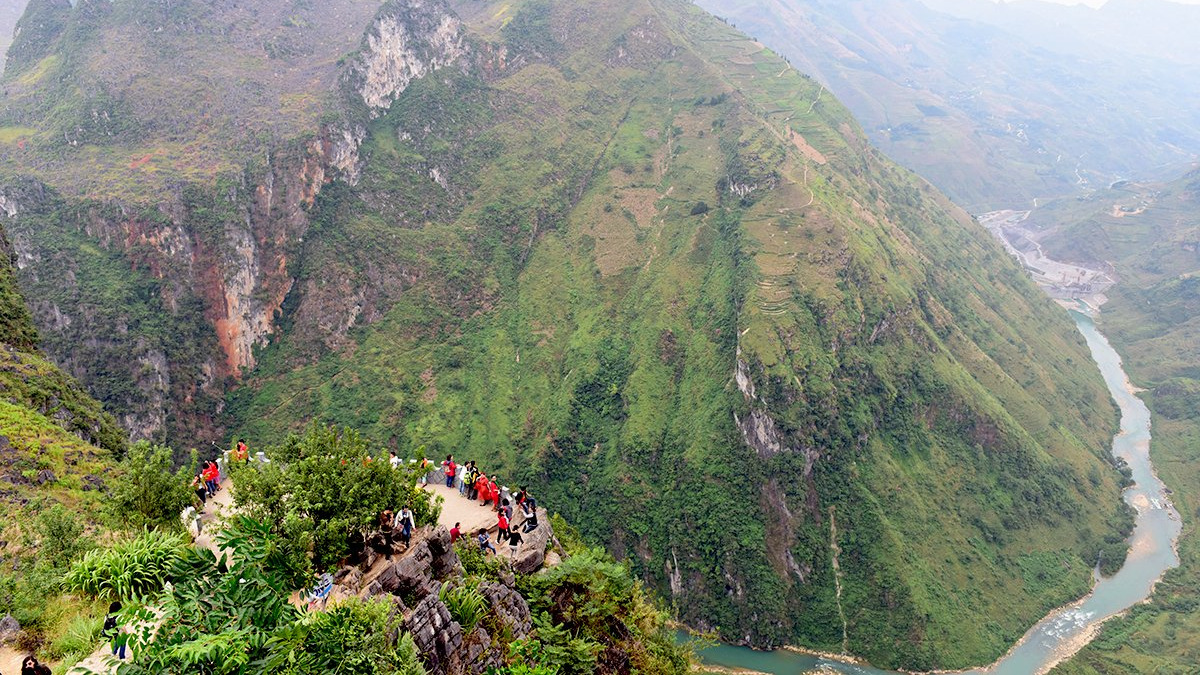
As a province located in the northernmost part of Vietnam, Ha Giang is an ideal land for romantic souls to travel around and explore many pristine places as a fairy. It is definitely also a place where everyone wants to go and admires the charm of the buckwheat flowers. To say the least, Ha Giang is the place where visitors should come to visit at least once in a lifetime and fall in love at the very first place.
How to travel to Ha Giang
Ha Giang is about 300km north of Ha Noi. To reach Ha Giang only by road (by motorbike or car).
Where to stay when travelling in Ha Giang
Since the number of visitors coming to Ha Giang every year is immeasurable, resorts, hotels, motels and homestays are 4 popular types of accommodation, the large number of tourist accommodations are mostly in Dong Van District, Meo Vac District, Ha Giang City, and visitors can choose up to the preferences.
For backpackers, who travel with a tight budget, they can rent motels or homestays to save money.
On the other hand, visitors travelling with children are recommended to rent a comfortable hotel.
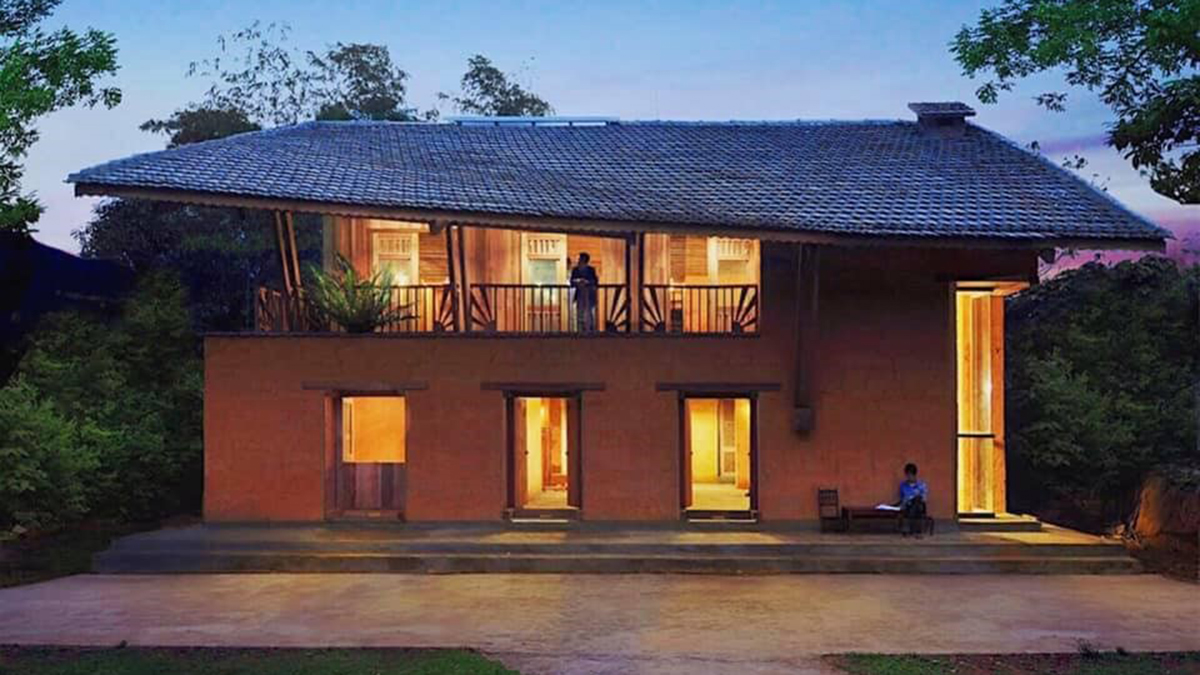
Dao Lodge Homestay (Photo: Dao Lodge facebook page)
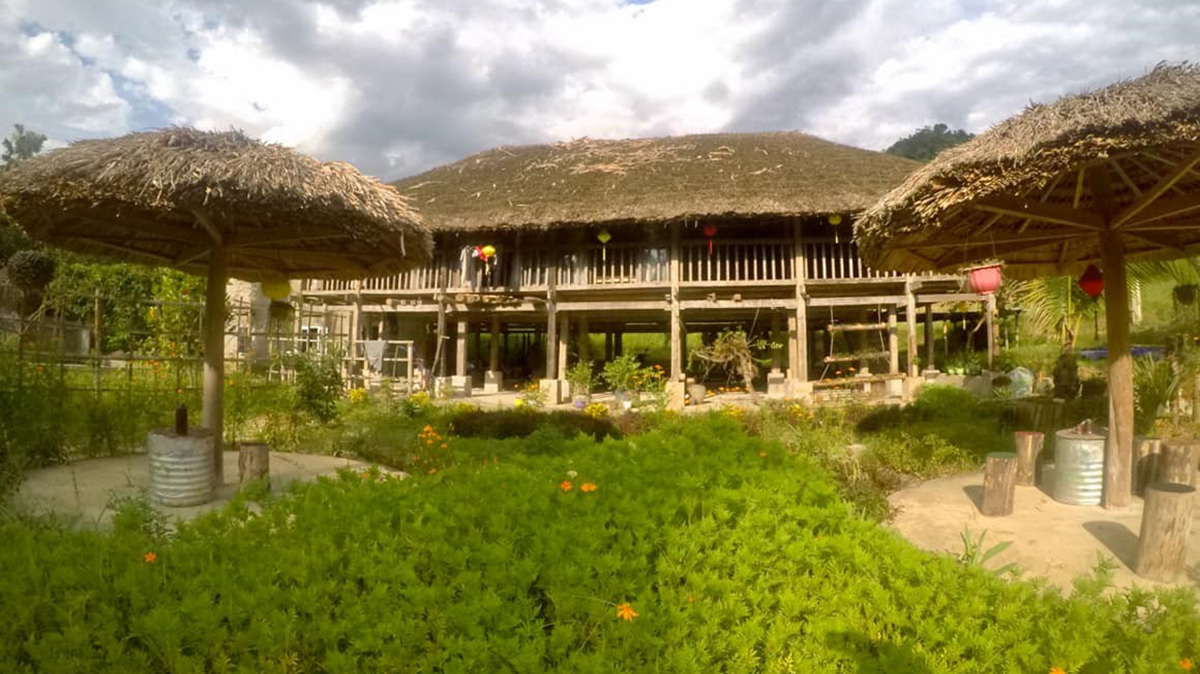
Lang Tay Homestay (Photo: Lang Tay homestay facebook page)
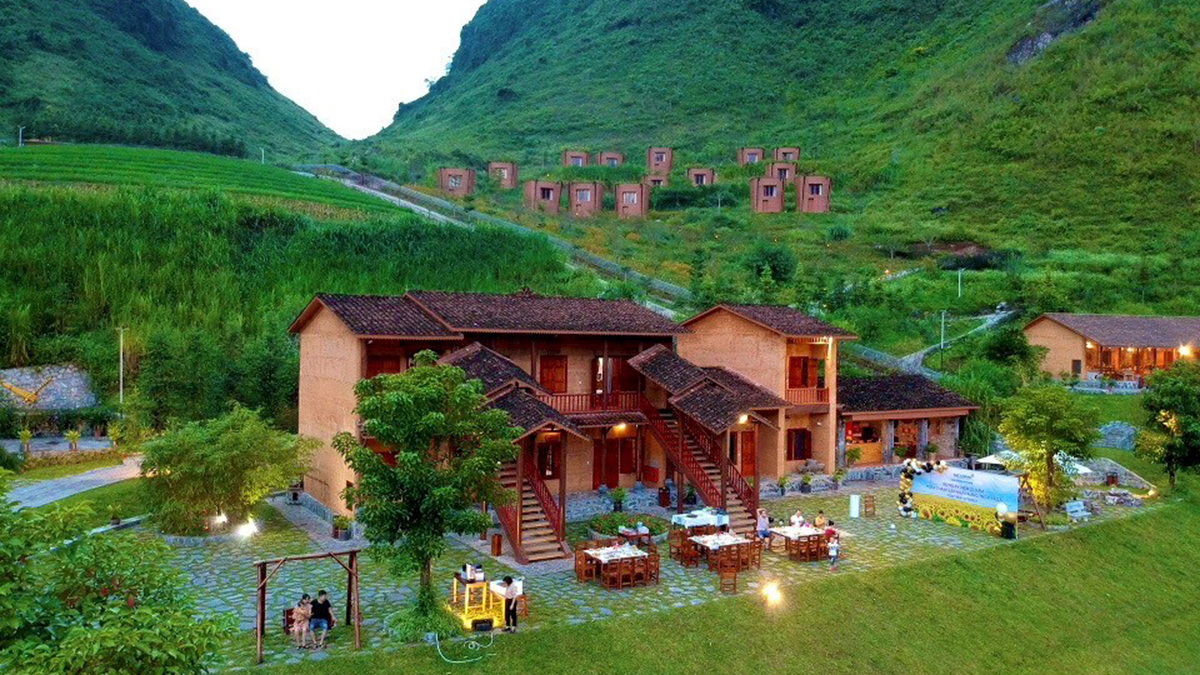
H’mong Village Resort (Photo: H’mong Village Resort website)
The best time to have a perfect Ha Giang trip
To be honest, Ha Giang is beautiful and charming as always in every season, visitors coming to Ha Giang each season will be offered different sceneries and just by its own beauty is enough to captivate every visitor’s heart. Coming here, visitors will also have the opportunity to meet the children of the ethnic minority groups (such as H’mong and Tay) in traditional costumes with a bright smile.

Children of the H’mong and Tay ethnic groups with a bright smile (Photo: vietnamnet)

Ha Giang is a mountainous area in the Northeastof Vietnam that has an extremely cold climate (Photo: vietnamnet)
Ha Giang in the spring will be coated in the scent of flowers, especially cherry blossoms, plum flowers, mustard flowers and pear flowers in March. Spring is also the season of festivals and the most unique Khau Vai Love Market taking place, where young men and women come to meet and get acquainted and couples hangout and enjoy lovely moments.
Summer is the season of waterfalls falling on the terrace fields. Visitors will witness with their own eyes the waterfalls rushing back from the mountain peaks, and then bumping up beside the small field trials that look extremely lively.
Autumn is when the weather is cool and pleasant; visitors not just smell but also feel the gentle scent of ripe rice stretching over the golden rice fields, blending with the colour of the sun.
Coming to Ha Giang in October-December, visitors will have the opportunity to enjoy the subtle fragrance, witness with their own eyes a purple colour of the buckwheat flowers covering all the small villages. Also upon visiting, visitors can encounter ethnic children with innocent mischief, wearing colourful brocade dresses; the scenery is full of peace and dream as flowers grow in every corner, from hills and creeping into the alleys. December is also the season of yellow canola flowers and tiny mustard flowers, when they show-off their vibrant beauty and charm under the sun and wind, standing out among the green colours of the mountains and forests, creating such romantic and breath-taking scenery.
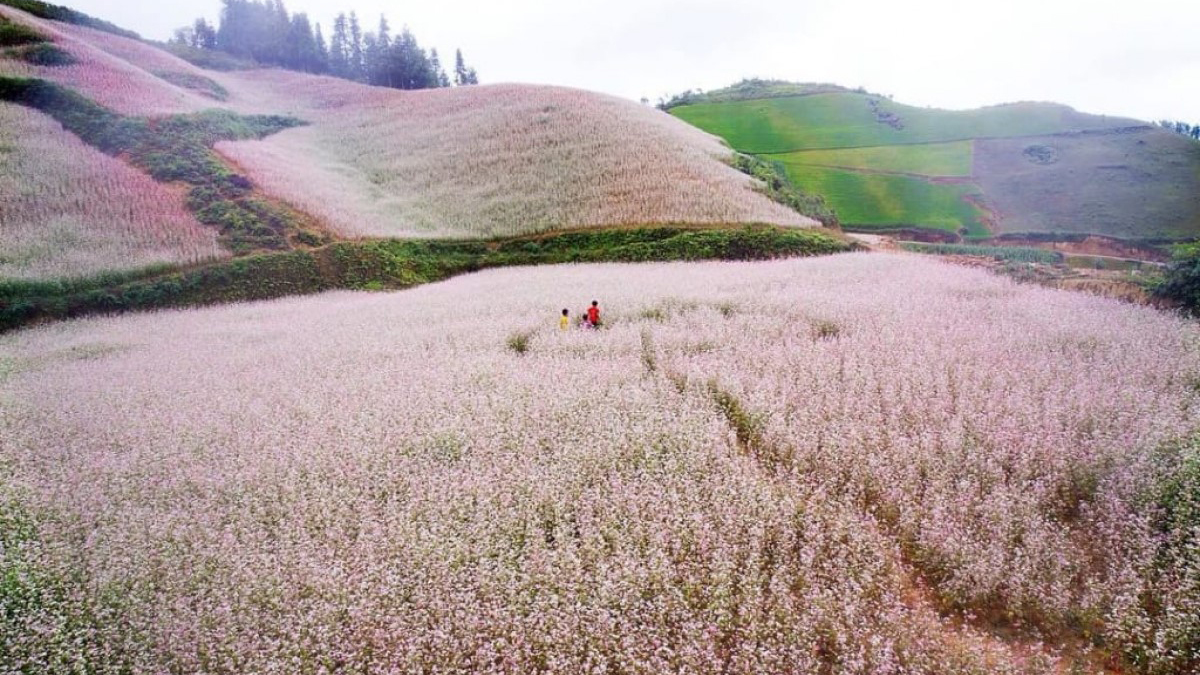
Buckwheat flower field (Photo: vietnamnet)
Ha Giang - Where to go and things to do
The best thing while travelling in Ha Giang is probably riding a motorbike on the dangerous and zig zag passes. It may be a bit risky but it is worth the try and definitely to be one of the most memorable and overwhelming experiences.
Besides primitive and majestic landscapes, Ha Giang also owns historical relic sites such as the Heaven’s Gate and Quan Ba twin mountains (Quan Ba District); the Vuong Family Palace and Lung Cu Flagpole (Dong Van District); Ma Pi Leng Pass (Meo Vac District); Tien (Fairy) Waterfall – Gio (Wind) Pass and the Ancient Rock field of Nam Dan (Xin Man District); and Quang Ngan mineral stream in Vi Xuyen District, etc.
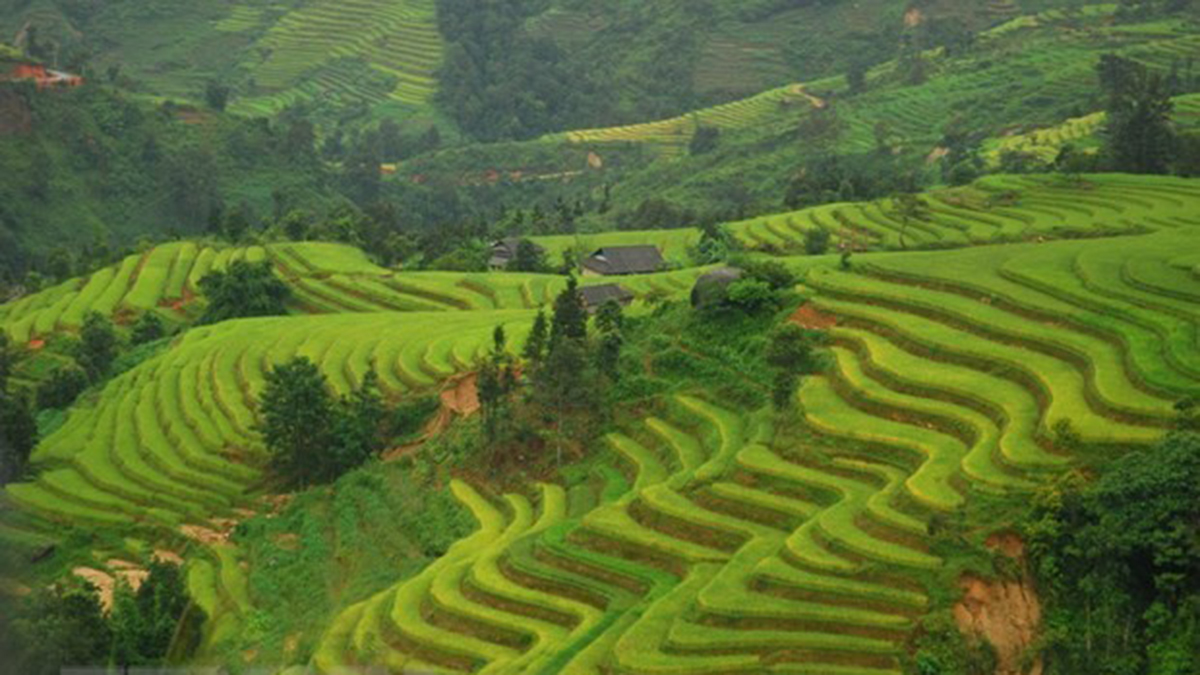
Hoang Su Phi terraced rice fields (Photo: VNA)
Dong Van Karst Plateau Geopark
Dong Van Karst Plateau was recognized as the first Global UNESCO Geopark of Vietnam and the second in Southeast Asia after the Langkawi of Malaysia. Its landscape is spectacular and unique with high mountains and deep canyons. The highest peak is Mac Vac Mount (1,971m) while Tu San is the deepest canyon (700-800 m deep). There are two natural conservation areas rich in fauna and flora species such as conifers, Asian black bear, Southern serow (a solitary mountain goat) and many species of bird in this geopark.
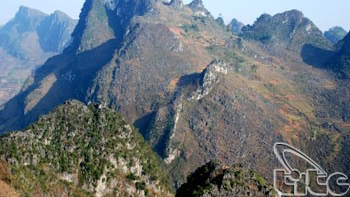
Lung Khuy Cave
According to many experienced travellers, Lung Khuy Cave is a must visit place once coming to Ha Giang Province. It is located in Quan Ba District, only about 10 km from Tam Son Town. This is well-known as the most beautiful cave in Ha Giang. Visitors will be overwhelmed by its 1000m length with magnificent view, there are many sparkling stalactites once going further inside the cave.
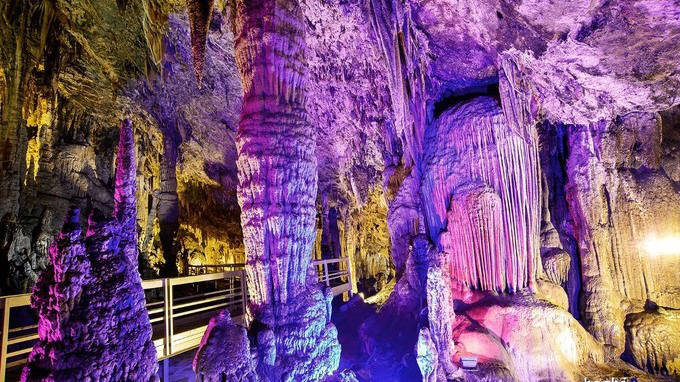
(Photo: VOV)
Bac Sum Slope
On the way to Dong Van Karst Plateau to see the unique Rocky Mountains, visitors will pass the Bac Sum Slope; Located between Vi Xuyen and Quan Ba districts, Bac Sum Slope will offer a majestic scenery of Ha Giang from another aspect.
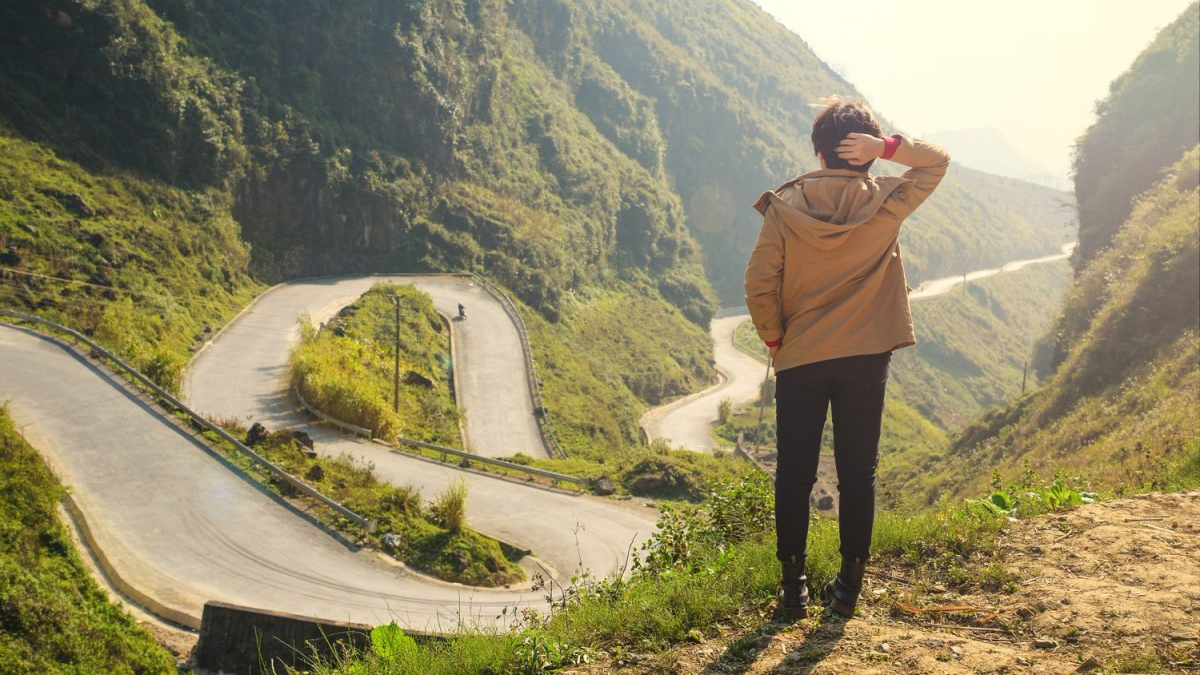
(Photo: VOV)
Chin Khoanh Slope
In Ha Giang, one of the most speciality features besides passes is slopes. Located next to Tham Ma Slope, visitors will have a chance to admire the wonderful scenery since it is the most winding and gorgeous slope in Dong Van District.
Ma Pi Leng Pass
Ma Pi Leng Pass is one of the “Four great passes” of Vietnam and located on the Happy Road, connecting 2 districts of Dong Van and Meo Vac. Ma Pi Leng Pass is famous for being a dangerous mountain pass that lasts up to 20km. People here usually say to each other that “going to Ha Giang without conquering the top of Ma Pi Leng Pass is a failure”. Plus, the panoramic view with the top is a charming scene and below is the emerald Nho Que River of Ma Pi Leng Pass will certainly not disappoint visitors.
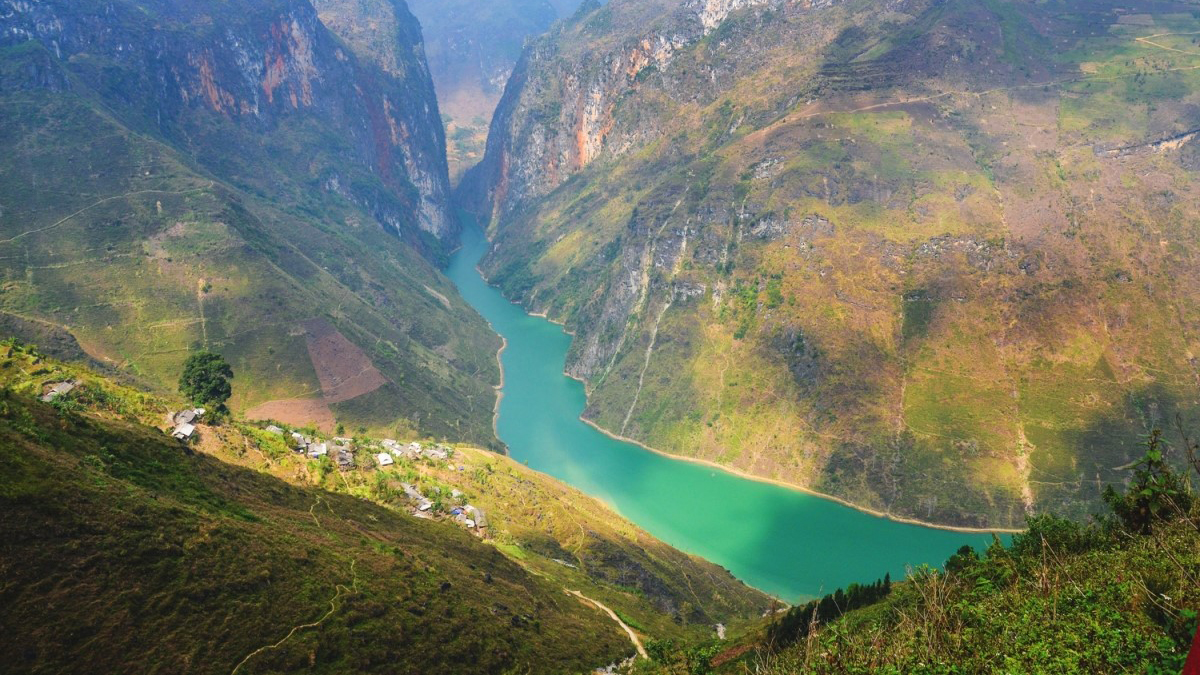
(Photo: VOV)
Lung Cu Flagpole
A notorious flagpole of Vietnam is located in Lung Cu Commune, Dong Van District with an altitude of nearly 1,470m above sea level. It is also known as the northernmost point of the Fatherland, and has sacred significance for the country of Vietnam. The pride in a heroic and resilient country hidden in each Vietnamese’s heart will definitely appear wide and clear in front of the fluttering red flag with a yellow star.
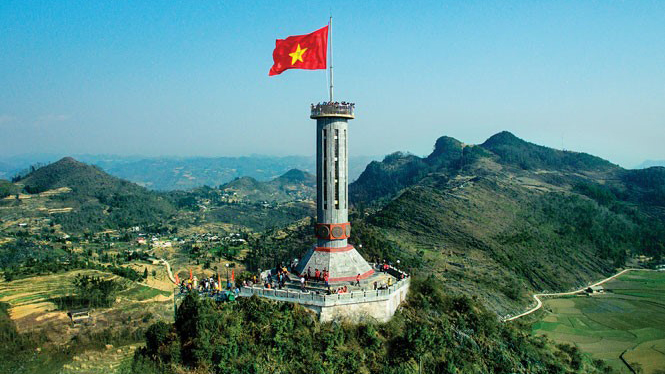
(Photo: hanoimoi)
Milestone 428
Located in Lung Cu Commune in Dong Van District, Milestone 428 is the northernmost point of the Vietnam, where visitors can watch the Nho Que River flowing into Vietnam. Journeying to the Milestone 428, visitors will experience trekking, watching the vast mountains.
The Vuong Palace
The Vuong Family Palace or the Meo King’s Mansion was built nearly 100 years ago. According to the legend, the owner of this mansion spent up to 15,000 silver coins (an equivalent of VND150 billion at the current rate). The Vuong mansion was built by the skillful craftsmen who came from Yunnan (China) along with the best of the H’Mong workers. Therefore, the structure has the architecture of 3 cultures including Chinese, French and H’Mong. The mansion is about 14km from the town of Dong Van, in the locality of Sa Phin Commune. The Vuong Family Palace is like a stone castle among nature, protected by the high canopy of special trees in Ha Giang.
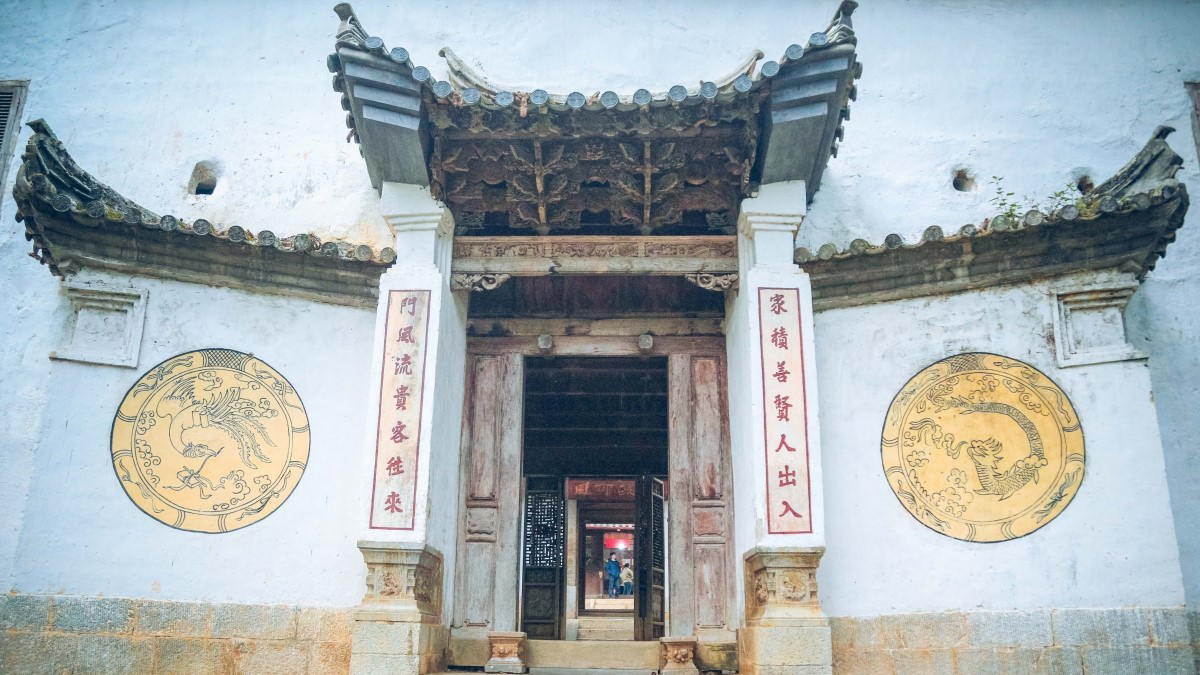
The Vuong Family Palace features a unique style of architecture (Photo: vietnamnet)
Dong Van Ancient Street
A small street located in the middle of a valley surrounded by rocks, where many rundown clay houses built in the late 19th century are kept and well-preserved. Visitors coming to this old street on the full moon days will have a chance to admire lanterns hanging along the street, creating mesmerising scenery.
Yen Minh Pine Forest
For visitors who love to get closer with the nature, this place will be the “pinetiful” getaway. Immersing to a wild and quiet place and starting to retreat the souls.
Phien Market
Visitors who love to learn about the culture of many minority groups in Ha Giang, markets are the place visitors should not miss. Markets are place containing all the cultural beauty and people of the ethnic minorities in the northern mountainous region. Visitors can be amazed by the colourful clothes and brocade fabrics, witnessing the daily life of ethnic people in Ha Giang through their activities of exchanging and trading products of the mountains and forests.
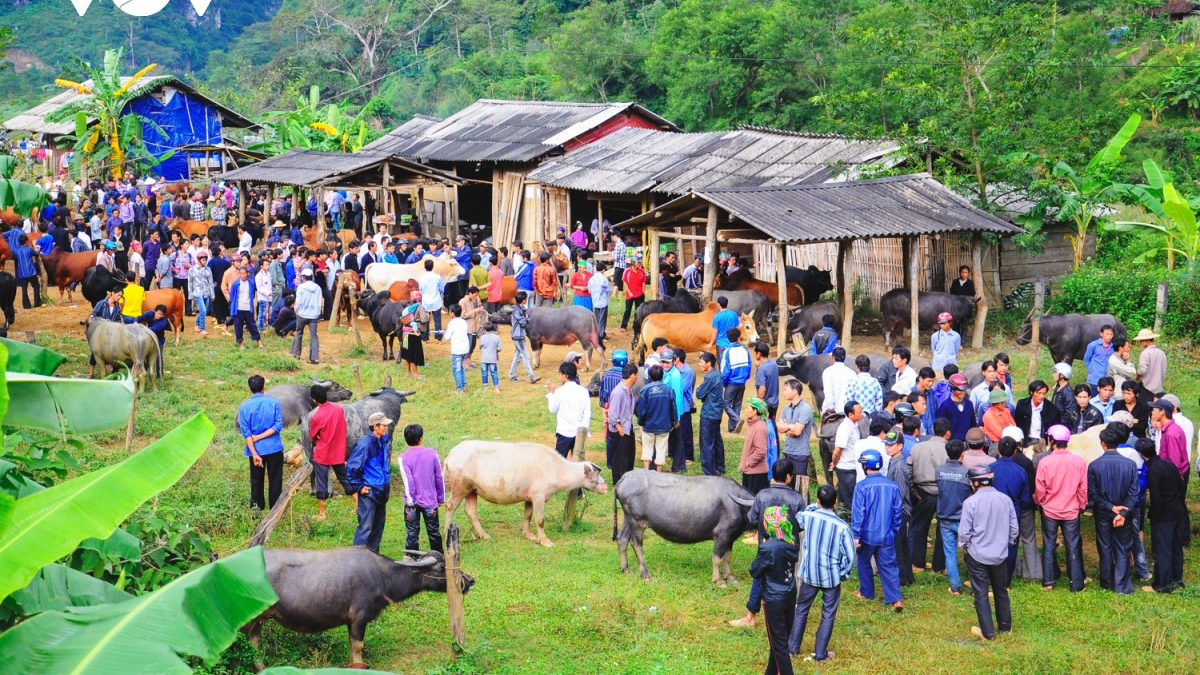
(Photo: VOV)
What to eat in Ha Giang
Five-colour sticky rice
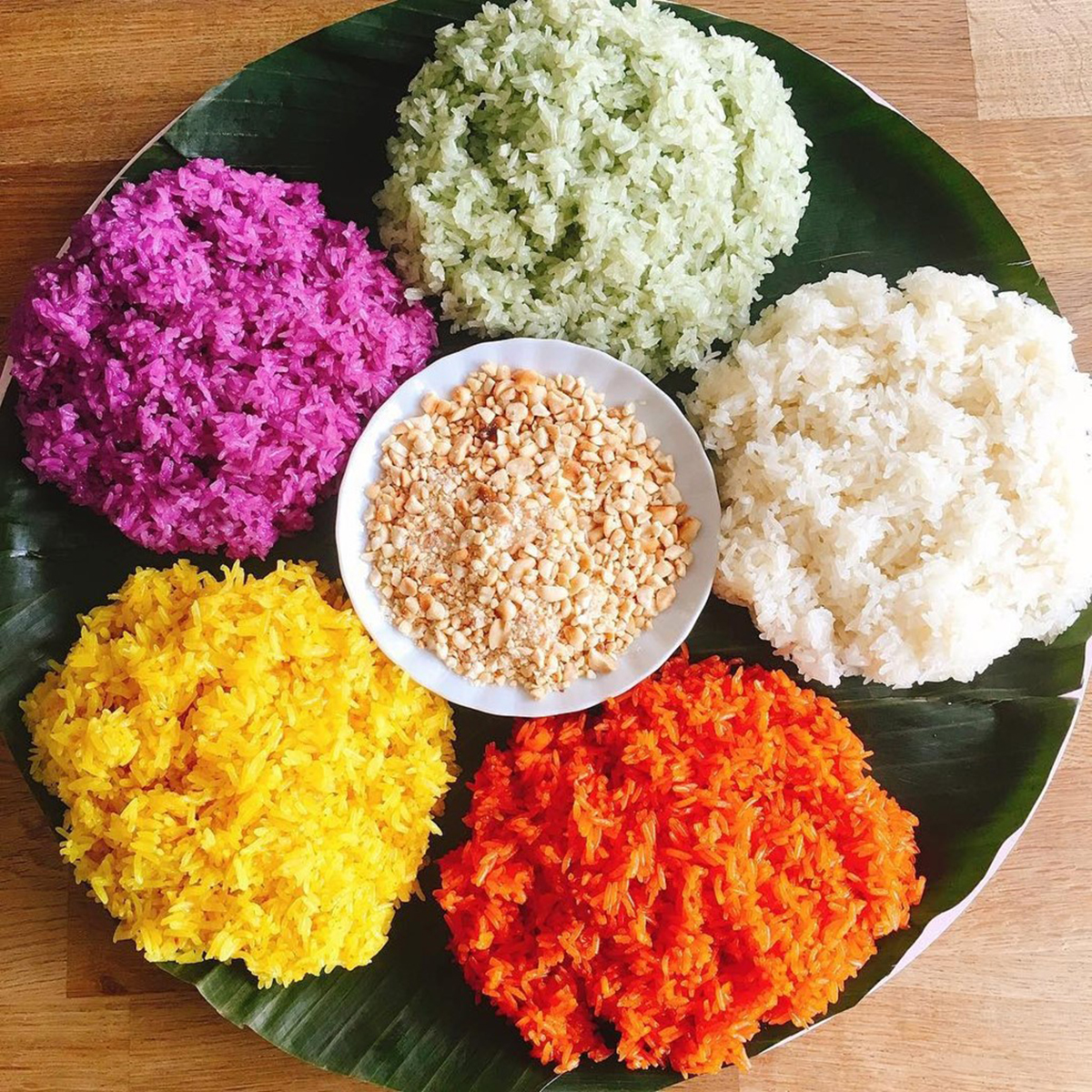
(Photo: discoverhagiang)
This is an important dish of almost all ethnic minorities in the mountainous regions of Northern Vietnam. The name of the dish comes from the fact that it has 5 colours. In a nutshell, the thing that creates the colour of the rice is not chemical substance but the natural leaves. The five colours of the dish represent the five elements of life in the Vietnamese's belief: yellow is earth, green is plant, red is fire, white is metal, and black is water. People believe that the existence of these five elements create the well-being of heaven, the earth and humans.
Thang Co
“Thang Co” is a traditional dish of H'Mong. It appeared about 200 years ago, and has become common dishes indispensable to people of the North mountainous region, especially in the highland markets. “Thang Co” is also known as a hotpot of mountainous people, which contains all of the organs and bones, meat, and fat of this horse.
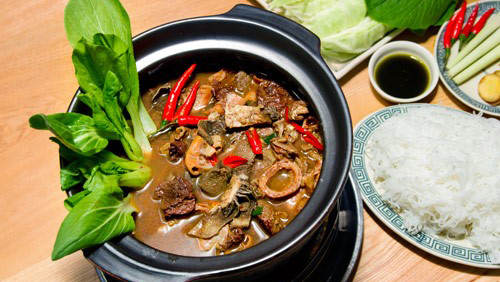
(Photo: Hagiang tourism)
Buckwheat cake
This cake is made from buckwheat seeds. The tiny seeds were crushed into fine powder and then mixed with water, poured into a soft mould rolled into bread, simple but special. The taste will not be confused with any other cake.
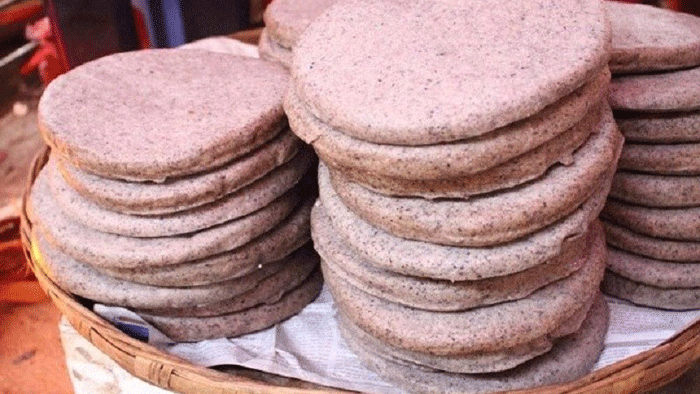
(Photo: baomoi)
Steamed egg rolls
Ha Giang has an extremely cold climate. This is why the local people prefer to eat hot food and Steamed egg rolls are one of them. This is one of the typical breakfast dishes of locals. Steamed egg rolls is often eaten with the pork bone broth sauce.
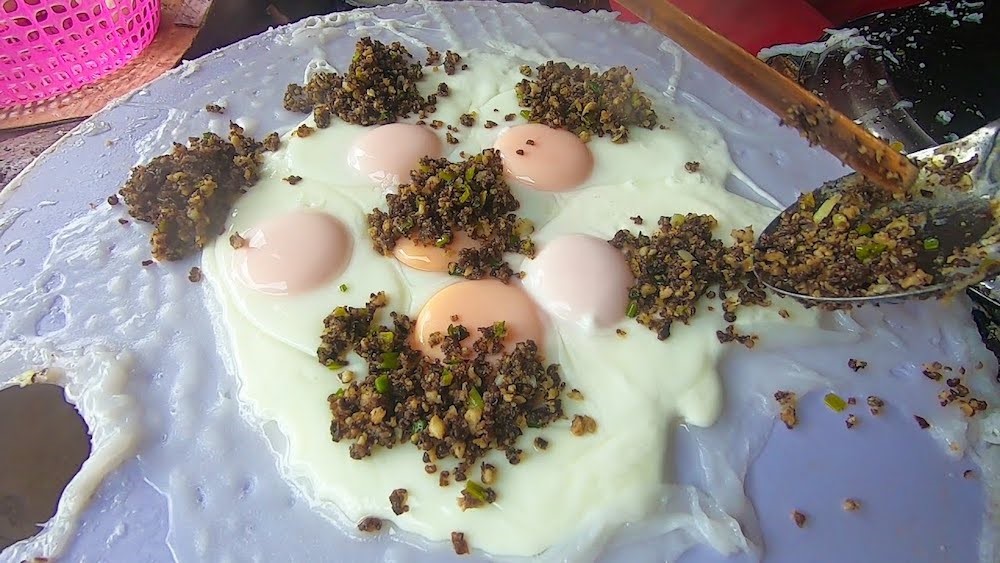
(Photo: internet)
Thang Den
Another hot food for visitors to have a taste of when coming to Ha Giang is Thang Den. It is similar to the floating cake in Ha Noi or Cong cake in Lang Son Province, made of sticky rice flour and crushed mung beans filled inside. The cakes are kneaded into sphere shapes and boiled in hot water. Thang Den is often eaten with coconut milk and ginger drink.
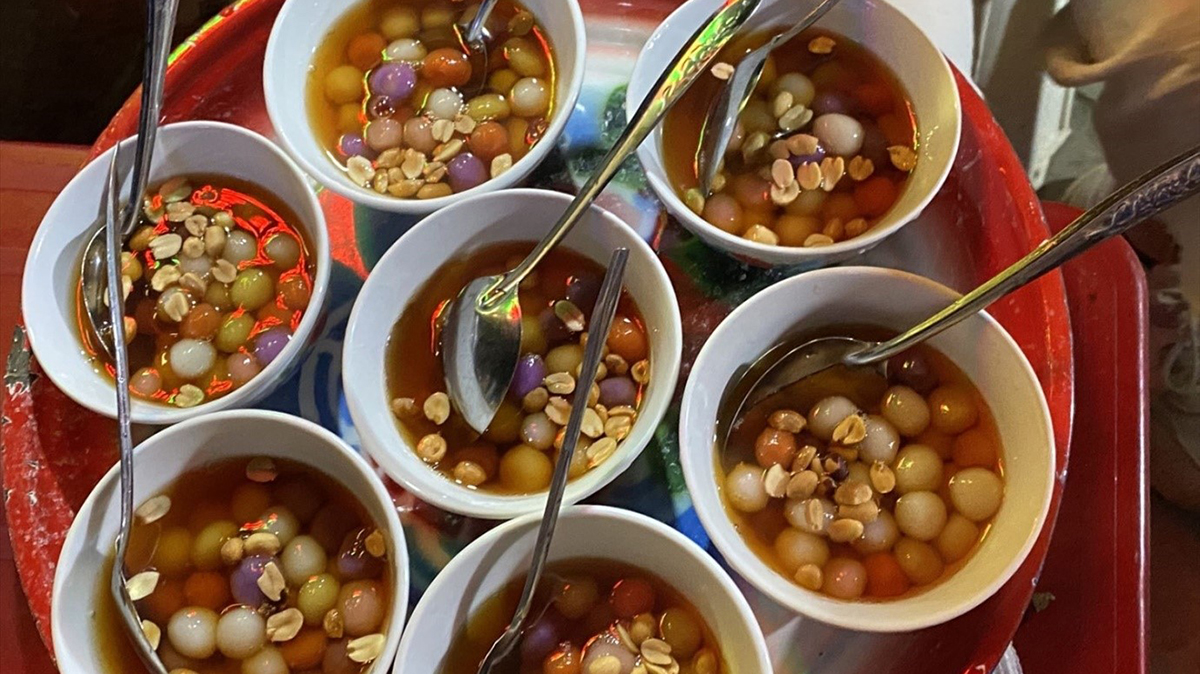
(Photo:baodantoc)
There are still many dishes in Ha Giang which visitors should try such as: buffalo meat; mint honey; Bac Me sticky rice; Au Tau porridge; etc.
Ha Giang has always been a land that captivates many souls. Have yourself a trip to experience Ha Giang, the muse of the north-western mountainous of Vietnam and gather many unforgettable memories here.
Tourism Information Technology Center